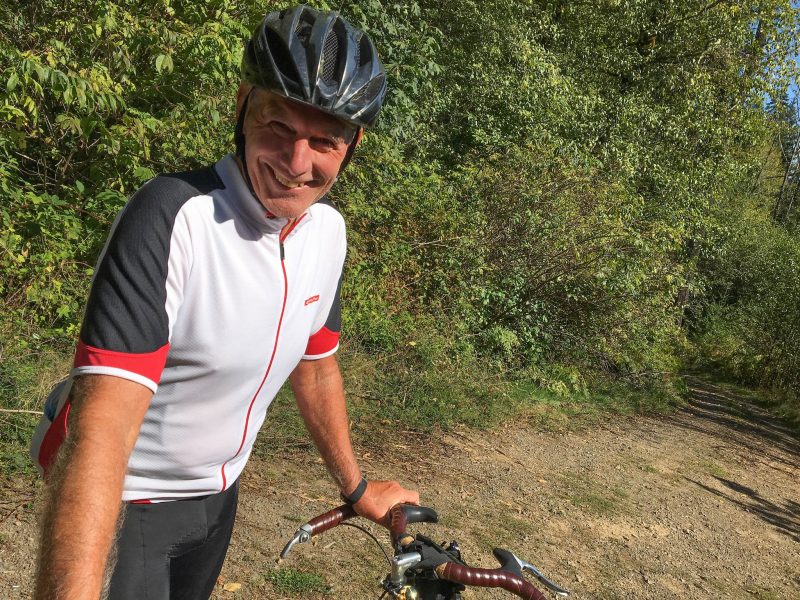
(Photo: J. Maus/BikePortland)
It’s fitting that I first met Dan Morgan on a gravel road.
The 66 year-old former dairy farmer, IBM retiree and Beaverton resident has been riding unpaved country roads his whole life. Now that the activity has become one of the biggest trends in cycling, he’s become an ambassador of sorts. He’s also working to prevent the county from paving over this newly discovered paradise.
“I’ve gotten my contemporaries to see that we respect and admire the same things that brought them to the rural area to begin with. They now understand what we do and why.”
— Dan Morgan
When we first met in 2013 he was helping Treo Bike Ranch owner Phil Carlson map out the roads of Morrow County in eastern Oregon. Since then I’ve come to appreciate Dan’s role in the community even more. He always seems to be helping someone out — whether they need a recommendation on tires (he’s an encyclopedia on the popular topic), want to know if a certain road is passable (his “secret weapon” to discover routes is a dual-sport motorcycle), or they need someone to sit on a committee.
Speaking of which, Dan is now the Chair of Washington County’s Rural Roads Operations and Maintenance Advisory Committee (RROMAC). As a transportation wonk, I loved discovering this committee. And as a lover of unpaved road riding, I was very happy to know Morgan was a part of it.
Committees have a bad reputation for being all process and no progress — but that’s not always the case. I wanted to know more about RROMAC, so I asked Dan to bring us up to speed.
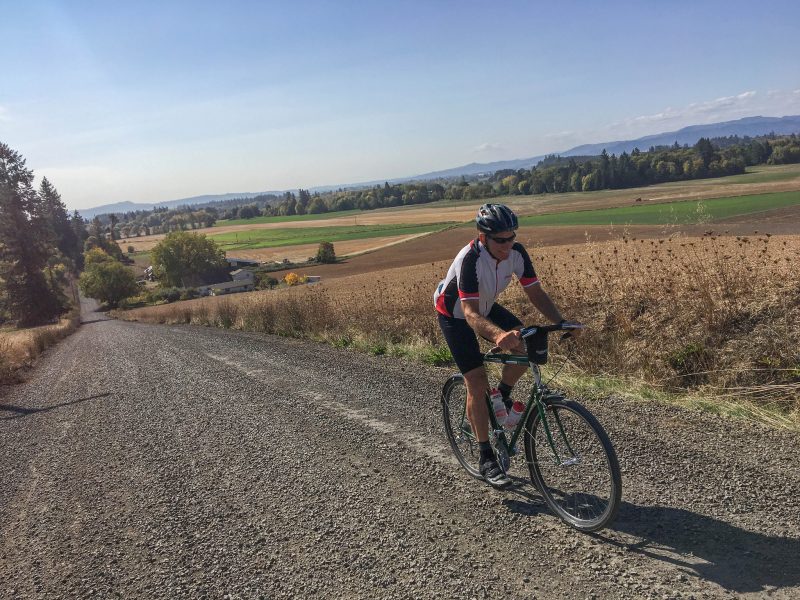
How’d you get involved with this committee?
I believe that I caught a glimpse of a news article back in 2015 in the Washington County newsletter about the gravel road upgrade program and some of my favorite roads were on the list and high in priority. So I contacted the RROMAC/WashCo and they told me that the cycling community had agreed and if I had a different perspective I should come to one of the monthly meetings. So I did.
They have a few minutes on the agenda for public comments and when it was my turn I expressed my belief that paving these roads would reduce tourism and increase traffic and perhaps accidents as people will drive way too fast. You should have seen the expressions on their collective faces, they thought I was nuts. But I kept showing up month after month, trying to understand why there was so much pressure to pave. In 2016 I was approved as a RROMAC member, 2017 I was vice-chair, and this year I became the big kahuna.
What kind of issues have you and the committee worked on during your tenure?
Our charter is, “to study rural road operations and maintenance concerns in Washington County, work with County staff to develop program and funding alternatives and make recommendations to the Board of Commissioners.” So there is a format that we follow regarding project planning and execution within the rural boundary. RROMAC is made up of quarry, forest, agriculture interests, rural residents and me — the sole urban representative.
Issues can come up monthly from public input like: curb height on roundabouts that make it difficult for ag [agricultural] equipment to traverse, why roads have sidewalks on them in the middle of nowhere, prescriptive versus permissive rights, and the current condition of the road or shoulders for all vehicles and bicycles. There could be a concern raised regarding a county process impact on water rights, invasive species or the specifications for a project out for bid.

(Map from Washington County – full version here)
Is there a specific goal or vision RROMAC is trying to reach?
What I have set as goals for my chairmanship is to standardize the rating and the maintenance of our approx 220 miles of gravel roads. There are two projects that we are focused on currently, first is establishing a rating system for gravel road
conditions (there is one already adopted by the US for paved roads, known as PCI). This is only the second year of gravel road assessment and we have already found ways to improve the condition of the roads and reduce the costs.The second is related but a bit deeper into the process and policies of the county regarding “roads not maintained”. Roads like Parson, Pottratz, Hoffman and Shermans Mill are all valid four digit country roads that the county no longer maintains.
As you have experienced, it would be easy to assume that because of a landslide or other road disruption that there would be a process that the county follows to put a road in this category. Currently there is no formal process so RROMAC is developing one for the county to review and hopefully adopt. We have no idea whether the list of candidates will remain on the list or will fall back into the county’s road maintenance program.
I would like to implement a metric to measure our worth. Under consideration by RROMAC is the use of the average pavement condition index. We have been starved of funding but the new Vehicle Registration Fee increasing to $30 will help us maintain our rural road system better. So we should see the trend (lower left hand chart) go up for rural roads.
One goal that I haven’t really pushed much, but I see the seeds of it germinating, is that WashCo becomes the first county that has dedicated bike/hike/horse trails to each of its neighboring counties. We already have Multnomah and Columbia. But getting the Trees to Seas, Salmonberry, and Yamhelas Westsider trails complete would make me very happy.
Advertisement
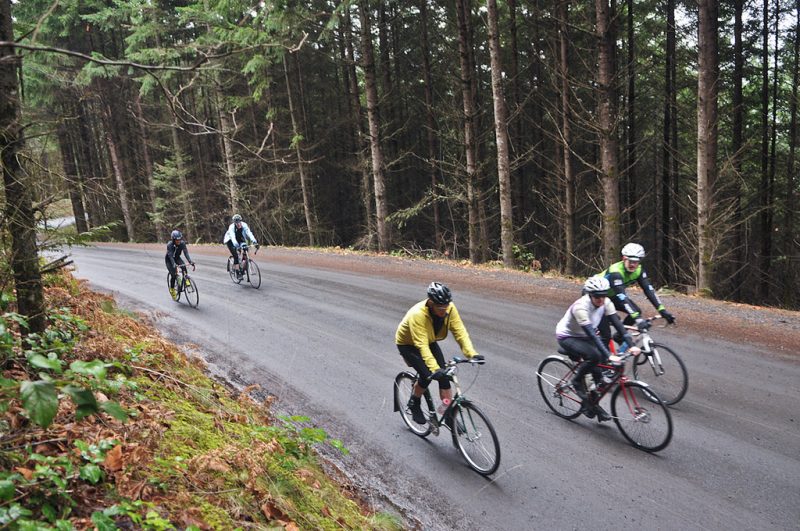
In general, what is WashCo’s attitude toward the growing popularity of unpaved riding?
Their first reaction is that we are nuts. I share with them your posts, Dustin Klein’s videos and have even presented to them the economic value of cycling. I have gotten my contemporaries (it took some doing) to see that we respect and admire the same things that brought them to the rural area to begin with. They now understand what we do and why.
There are of course shared concerns. From the quarry/timber/agriculture/transportation perspective, they still view us as a safety hazard and very unaware how long it takes to slow or speed up something that weighs 20 or more tons. In their view we are not
very considerate when we ride. A good analogy that I was told since I ride for recreation and they drive to pay the bills (we won’t get into the whole who pays taxes thing). Anyway, how would we feel if a group of people decided that Frisbee or Disk Golf would be more challenging if it was played on N Williams during rush hour? Cyclist dodging disks while they were just trying to get home. To operators on these roads, this is what it feels like.Unfortunately WashCo is more focused on the potential growth as it becomes harder and harder to commute from Portland. The industry that is here and is forecasted to grow will put additional pressure on our rural areas, but all governments are driven by revenue and service to the majority of the population.
Is there a role for interested citizens to help support the work of RROMAC?
Subscribe to the receive weekly updates under the Land Use and Transportation section. It is full of information on which roads are closed and which roads are under construction. This is really important if you are scheduling weekly rides out here. Of course this is more paved road-centric. If there is a burning issue you can always always open a request or call 503-846-ROAD (846-7623).
If there is anything on the RROMAC agenda or minutes that concerns you, the public is always welcome to attend. Or you can bring it to my attention as the meetings are kinda early, but we have donuts.
Anything else you’d like to share?
Be a steward and dine or drink where you ride. It makes a huge statement to the community when you do.
RROMAC is responsible for about 50% of the land in Washington County but contains less than 10% of its residents. There are few funds available to this region and we try to support our base the best we can. We are not part of an urban area that has adequate funding so we do plenty with little.
And one last thing… Ride your bike and explore our rural roads!
Thanks for sharing Dan. And thanks for being on the committee. See you out there.
RROMAC usually meets on the second Thursday of each month at 7:30 a.m. Meetings are held at the Walnut Street Center, Training Room 1 (1400 SW Walnut St. in Hillsboro). Meetings are open to the public.
— Jonathan Maus: (503) 706-8804, @jonathan_maus on Twitter and jonathan@bikeportland.org
Never miss a story. Sign-up for the daily BP Headlines email.
BikePortland needs your support.


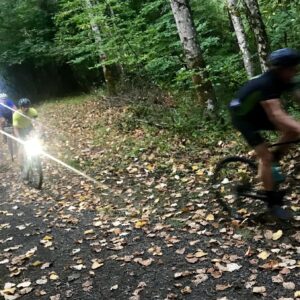
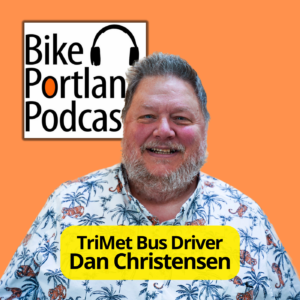

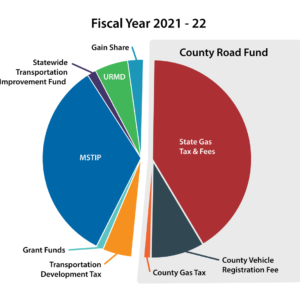
Thanks for reading.
BikePortland has served this community with independent community journalism since 2005. We rely on subscriptions from readers like you to survive. Your financial support is vital in keeping this valuable resource alive and well.
Please subscribe today to strengthen and expand our work.
Woohoo Dan! Nice write up. Chris Streight
Yeehaw! Dyno Dan, thanks for all your good works!
One question I have regarding the Washington County map is the thin grey lines – such as connecting Dairy Creek to Pumpkin Ridge – apparently they’re not maintained by Wash. Co. , but are they public? I’ve searched for the connection I mentioned above, and (if I was where I think I was) it was gated with about a dozen “no trespassing” signs. That would make a spectacular loop ride. So it would be useful to know about these thin grey lines – I think the legend just titles them “local roads”.
Art, in my experience those rural grey lined roads are all private (why most are dead ends going up to someones property rather than connecting). The ones that are open to public use by default are generally the timber company owned ones that you pass a blue metal gate to enter or are just known as a frequently used connector such as Smoke Ranch between Pumpkin Ridge and Dixie. Logging roads are typically open from 5pm to dusk on weekdays and all weekend long during daylight hours.
Private landowners should be thought of by default as valuing their solitude and not amenable to explorers though if you can meet them where their private road meets a public one, frequently they will give you permission to pass, but just be ready for the frequent long backtracks riding in the forest entails. The specific connection you mentioned up past the end of Dairy Creek is actually infamously known for the land owner closing off that access and being hostile to trespassers. I can’t find it now, but even thought that I read how the gates they out in place may have even overstepped their rights to what may or may not have been a public right-of-way at some point.
Thanks, Jason – do you know if this is true for the short segments of Lookout Mt. Rd. and Hoffman Rd. (both North of Buxton / east of B-V trail)? Because I’ve wanted to do this loop from Banks, returning on the B-V trail.
Hoffman is wide open although technically within Weyerhaeuser’s “permit area”. I’m unclear as to if ungated roads within Weyerhaeuser zones are ok to ride without a permit… Regardless you can get up to or down from Bacona on Hoffman.
We are working on clarifying where it is acceptable to ride. Stayed tuned, this is a year or more thing not by next quarter.
As a kid learning to ride a bike in the Willamette Valley (almost 70 years ago) the only place we could ride was the local roads that were all gravel. We hated it and were jealous of the city slickers who got to ride on pavement. Once our roads had three smooth wheel tracks worn in the county would grade the road again making it fluffy and unrideable for a few weeks. I expect the current excitement of gravel riding will turn out to be a fad spawned by the bike industry trying to get us to buy another bike.
Does anyone know why they make it fluffy and unrideable after a regrade?
The difference between now and then was that paved streets weren’t all traversed by multitudes of autos with high averages speeds. “Gravel is the new road” may be a bit of an industry fad but the underlying mechanism pushing people looking for a relaxing road ride off pavement and onto gravel is expanding population.
Dan, that may well be true, selling people stuff they think they just might need IS the American Way – but once you’ve got the capability to ride gravel, either by setting up a bike you already have or buying one specifically for that purpose, your route possibilities are exponentially expanded. Doesn’t mean you don’t ride some asphalt. Plus, those gravel roads tend to be pleasantly low traffic. There’s a lot to like. Except the “bad” gravel…yes, I’m talking about you, you washboard-y dirt devils.
Hi Dan, I have been riding gravel roads for 50 years on old steel. I agree that it has caught the industry’s eye for increased sales, but for some of us it’s what we prefer. Safer, scenic, and usually more wildlife…
Smoke Ranch is such a gem!
Fantastic to know we have such a fantastic steward and resource in the county as Dan. I’ve “dabbled” in gravel the last half dozen years on my road and cross bikes, but just added a “gravel bike” to the stable (will use it for commuting and as a rain bike just to break out of the niche). I’m looking to venture farther towards the edges of the county map this year and hearing that there is such a committee and a gravel road index in progress is very exciting.
Please report on and list any rides Dan may be leading this year as well, getting his perspective and local knowledge in person sounds like it would be a fantastic opportunity.
Hey Jason, I do lead some rides out in the wilds, but most are for exploring new routes to share. Our usual fare is for riding tandems on gravel. Yes it can be done.
Ha!
I get to ride unpaved ROWS right in the Woodstock neighborhood. Gigantic potholes are a definite plus, especially when filled with greasy water.
Favorite bike is track frame with 26 inch home-brew wheels and 35 mm cross tires. Fixed, of course
Gravel Roads are the future. It is the official policy of many rural areas in the midwest that can no longer maintain their lesser used paved roads to grind them up and return them to gravel. As the age of oil draws to a close the raw material for asphalt roads will vanish as well leaving us with concrete in high density areas and gravel everywhere else.
“Trees to Seas”? Is that really a thing? From the link (to City of Tillamook website) it just seems like re-branding Hwy. 6 with a catchy name. Is there more to it (I hope) than that?
Hi Art, Trees to Seas is essentially a route that will follow somewhere along Rt 6. I don’t have any details on it yet. At first I was hoping that it was going to follow the North Trask route but that does’t seem to be the case
Happy to see an advocate for riding facilities in Washington County but
gravel roads are non starters for: Skateboards, scooters, rollerskates, most walkers, many wheelchairs and are not recommended for some bicycles.
Paved Multi-use paths should always be the model for future routes.
I’m really glad we get to hear Cory’s perspective from time to time.
Cory, I think that it is a matter of economics. Most proposals call for pavement at the start and ends and at some of the remote parking areas, but it isn’t feasible to pave and maintain long stretches of remote and poorly accessed sections.
I wonder what bike is pictured; with a mustache bar (you don’t see that everyday). Is it a Bridgeport OX-1?
I ‘m sure you meant Bridgestone XO-1.
Spiritual successor, it’s a Rivendell, guessing either an Appaloosa or Atlantis model given the bars. You can get a better look from this article from 2015 where Jonathan rode with Dan west of Forest Grove. https://bikeportland.org/2015/06/03/ride-exploring-barney-reservoir-rugged-timber-roads-west-forest-grove-143402
Hi Jason, it’s a late 90’s Rivendell ”Long Low”
Very cool! Reminds me I’d like to restore my ’91 MB-1 at some point. Any mailing list I can get on for some of those exploring rides around the county? I’m in SE Hillsboro.
Hey Doug, The bicycle Jonathan posted is my late 90’s Rivendell ” Long Low” Brooks
saddle and bar tape, Sugar built wheels and nice fat tires. Not as classic as the XO-1 but in another decade, perhaps
Me likey that bikey! Particularly the mustache bar.
I agree with Peterson (ie Rivendell) on most bicycle issues (big tires rule, wear normal clothing), so isn’t Rivendell the logical progression of what Bridgeport was after. I think so.
Remember when a Bridgeport catalog was a good afternoon reading?
There is nothing like the old Riv Reader!
What are good tires for this kind of riding? And are tube protectors recommended?
So far my favorites are wtb ranger 27.5×2.25″ tubeless. You get the width and low pressure that floats gravel and they’re still light and nimble once you’re back on pavement.
Hi Toby, fat and lower pressure is the key. I am a beefy guy so I like anything over 35mm and I run less than 50psi. I run plenty of different tires but Compass, Schwalbe, Maxxis and Vittoria seem to have all great skins. Lately I have been loving the Ritchey Jobst Brandts.
I’m trying to conceive of an optimal bike for this sort of riding.
Something like a competitive cyclocross machine: 1 chainring; 6 or 7 cogs. Do not need 3 chainrings and 9 cogs–27 gears (not all unique) are useless.
Or bag the derailleurs entirely and run a geared hub with a chain designed to stay on the teeth. Bag the marginally stable dished rear wheel necessary for all those cogs.
Derailleurs were developed to provide road-racers with an extensive array of high gears to enable them to pedal efficiently in the peleton, minimizing expenditure of energy, especially important in stage-racing. But stage-racing machines get TLC every night, especially cleaning and lubrication, vital to proper functioning of chain-flipping.
The human locomotor is a torque monster. 3 gears would suffice for “graveling.” 1 fixed would be fun too!
Alfine internal Di2 with narrow-wide up front (or Gates belt)…
Latest “Road Bike Action” I just picked up in airport has some interesting builds by English.
Any bike can be ridden on gravel — just depends on the road specifics. I normally ride 23 slicks though I’ll pull out the recumbent trike if surfaces are loose or I feel like bombing down hills.
Many gravel surfaces are neither hard to ride on, nor are they particularly hard on tires. You don’t have to worry about tiny shards of glass, wires from steel belted radials, metal debris, or sharp rock chips spread for traction getting forced into your tires.
I disagree that you need only 3 gears and see no reason to avoid derailleurs. Gravel roads can be very steep — as in steep enough that spinning out your rear tire can be a real issue. As such low gears that make it easier to maintain consistent torque can be handy. Besides, it’s always nice to have access to a gear that gives an optimal cadence.
Be aware that if you ride a lot in the sticks, you are virtually certain to encounter poorly socialized and unrestrained “guard dogs” owned by even more poorly socialized humans so some comfort with dealing with those sorts of situations is required. Be prepared, and don’t count on your cell phone working or anyone bailing you out.
One year later . . . @Jim Lee – A 1X drivetrain (single front chainring) works well, but I’d go 9 speed or greater # of cogs – simply so you can have a reasonably wide gear range without huge jumps between gears. I currently have three bikes, all 11-speed, all 1X, two have 11-40 cassettes, 1 is an 11-42 cassette. When the 11-40s wear out, I’ll be replacing with 11-42, just for the slightly lower low gear. Both of my “road” bikes have 40t chainrings, my mountain bike has a 32t chainring. All the chainrings are “narrow-wide” which helps with chain retention. And give yourself an easy enough gear range – your future self’s knees will thank you. Also – nothing but 38mm or wider tires for me! Lower pressure = more comfort. BTW, slicks are NOT recommended for gravel.
Hey Jonathan the gravel roads in Banks link appears to be broken/page not found. Do you know where else I can find it?
Click on the “GIS Maps” link when you are redirected and you’ll find it there. Or maybe this link works:
https://washcodrupalcms.s3-us-west-2.amazonaws.com/maps/Road_SurfaceType.pdf?Gir6luA6pp8WLYbaDiP9OeHuT6R5nidT